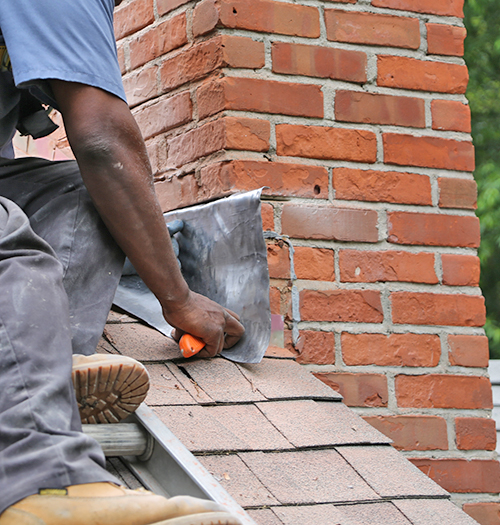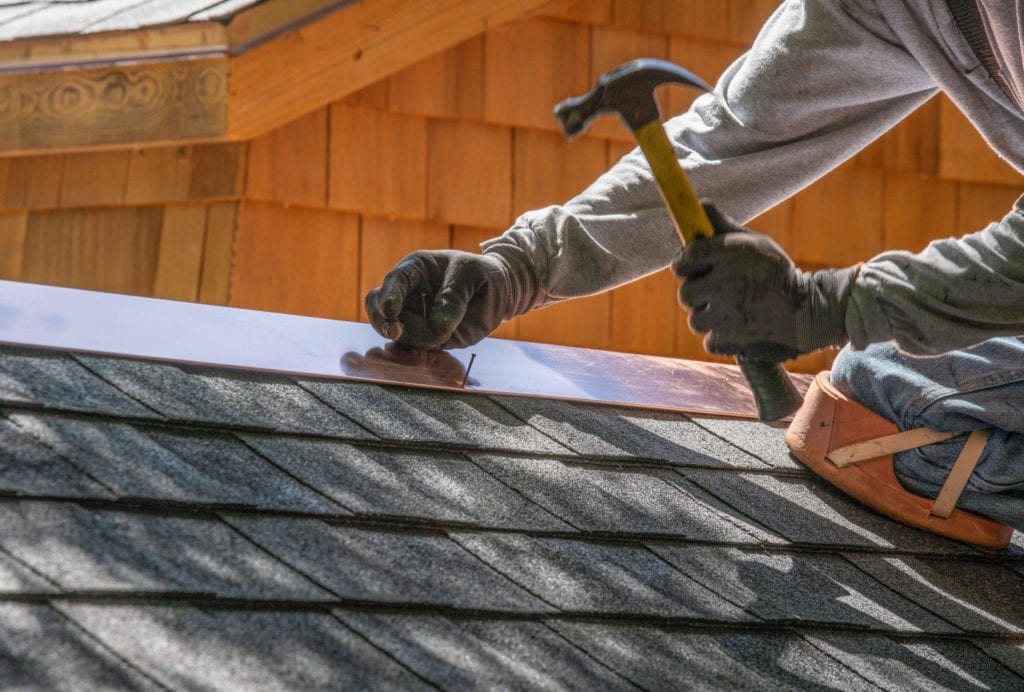You don’t have to have the knowledge of a contractor to be a successful homeowner. But you should have a few handy tips in your arsenal when common home maintenance and repair issues arise. That’s especially true when it comes to roofing. The average shingle roof is only expected to last about 20 years, so knowing how to maintain your current roof, how to repair small leaks, and when to call a professional can save you money and protect your home and the valuables it shelters.
Here are 12 roof repair tips every homeowner should know.
1. Understand when to call a professional.

Everyone wants to DIY today, and that can be a good thing. Doing small projects yourself can save a lot of money and give you well-deserved pride in your home. And with the wealth of online information, including how-to articles and videos, even projects like roofing repairs are something the average homeowner may have the confidence to handle. But be cautious when it comes to DIYing every roof problem. Some jobs are best left to professionals, and it’s important that you know your limits.
Call a professional roofer if any of the following scenarios sound like what you’re up against:
- Your roof has a very steep pitch.
- Your roof is covered in tiles, stone, or other breakable surfaces that can crack if walked on.
- If you feel unsafe accessing your roof or doing the repairs.
- If you’re uncertain about the repairs and nervous to attempt them yourself.
- If there is a lot of damage, major leaking, recurring leaking, or leaks you can’t find.
2. Know when to repair and when to replace.
Small areas of damage, a few loose shingles, and minor leaks can often be handled by homeowners. But at some point all roofs need to be replaced. Having a roof inspection performed by a professional roofer is the best way to know whether your roof needs to be replaced or repaired to make it last longer.
| Make it Last with Roof Repairs | Start Over with a New Roof or Roof Replacement |
|
|
|
|
|
|
|
|
|
|
|
|
3. All roof leaks are a big deal.
Even tiny roof leaks can make a huge mess. Roof leaks and dripping water can cause visible damage like dark spots on ceilings and drywall damage, but they can also cause damage you can’t see. Water can get into attic supports and joists, walls, electrical systems, and even foundations. This can cause rotting wood, dry rot, mold and mildew problems, electrical fires, and even foundation failure. As soon as you see or hear signs of a roof leak, act immediately. Stop the water from coming in, locate the leak, and seal it. Then address the possible problems of water damage and other issues caused by the leaks.
4. Dress for success.
Being on a roof is a dangerous place, and you’ll want to be dressed right to access the roof and make any necessary repairs. First, only attempt to go onto your roof if you feel safe doing so. Never go on a roof that has major damage and is in danger of caving in, that is made of tiles or another material that will crack under the weight of a person, or that is wet or slippery. If you don’t have a ladder or correct safety equipment, it’s best to call a professional.
If you can access your roof, wear long and heavy-fabric pants like jeans or work pants. It’s also smart to wear a long-sleeved shirt to protect your arms. It’s imperative to wear rubber-soled shoes that have good traction. Shoes that are slippery or not built for gripping can allow you to slip or fall, and that can cause serious injury or even death.
5. Use the right shingles for the job.

Even small repairs require matching shingles. One, two, or ten mismatched shingles will be visible from the ground and can make your home an eyesore. When you have to replace shingles, you must exactly match your current shingles—the color, brand, and exact product. That can be tough to do, since shingles can fade and age over time, so even exact matches can look off. It can also be hard to get older shingles, and even if you can find them, many roofing supply stores only sell shingles in packs that cover an area of 10 square feet. Experts recommend keeping extra shingles when installing a new roof; your roofing contractor should be willing to leave any extras with you. You should also take steps to do whatever you can to salvage old shingles. If some blow off in windstorms or become loose with age, collect them and try to reattach them if they aren’t damaged. This can preserve the look of your original roof by using shingles that were part of the original installation.
6. Flashing and vents cause most leaks.
Flashing is the metal strips around windows, vents, and chimneys that prevents leaks; however, over time, flashing and other leak guards like rubber seals can crack or separate from surfaces. This can cause water to leak into those areas. Flashing is specifically put in areas that are prone to leaks, such as where a dormer wall meets the roof or a chimney or vent penetrates the roof surface. So when flashing or vent caulking begins to leak, it can cause major damage. Regularly inspect flashing and areas where the roof is breached by vents or other features.
7. Exposed nail heads are dangerous.
Shingles, flashing, and other items are frequently nailed in using aluminum or galvanized steel roof nails. They’re made to resist rusting and damage, but from time to time they come loose or even fall out. Exposed nail heads should be hammered back into place and covered with caulk or a roof sealant like tar. If you see exposed nails, deal with the problem right away or call a professional to avoid leaks.
8. Learn how to find and repair small leaks.
By now you should understand that even the tiniest of roof leaks can cause major problems. Learning how to locate and repair small leaks can save you a lot of money and can be one of the best ways to protect your home. It’s important to remember that the source of a leak isn’t always exactly above the place water is dripping or pooling. You may need to follow the water to its source. Cover the access point outside and wait until the rain stops and the roof is try before attempting a repair. Then continue to watch the area that had been leaking to make sure the repair holds.
9. Flatten curling shingles and replace missing shingles to preserve your roof.

Aging shingle roofs may begin to show deterioration by curling up or shedding individual shingles. Even if your roof is newer, heavy rains, wind, and storms can loosen or free shingles. If you notice shingles beginning to curl, you can stop the process and tack them down with a dab of roofing cement or tar. Purchase it at any home improvement store, get on your roof (if you can do so safely), add a dab of roofing cement or tar, and press down shingles until they adhere and stay flat. If the shingles are cold or brittle, a heat gun can warm them up and make them pliable enough to complete the repair. If shingles have fallen off, retrieve them if you can (or purchase exactly matching shingles) and install them back in the area from where they’re missing. This can preserve a roof for months to even years, saving you the expense of a premature roof replacement.
10. Repair small holes and cracks.
If you’ve ever removed a satellite dish or receiver, you’ve seen that those small holes remain even after the device is gone. Plugging those holes with caulk or roofing tar is a must, since even tiny holes can let water penetrate the surface of the roof. Cracking shingles or tiles can also allow water to enter. No matter how small the hole or crack or how it got there, fixing it should be done as soon as you notice it. If the cracks or holes are widespread, you may need to call a professional.
11. Brick chimneys can be a big problem.
They’re classic and can be pretty, but brick chimneys age and can be a source of roof leaks. Whether it’s cracking mortar, missing bricks, or aging flashing around the chimney base, it’s imperative to inspect and repair any damage in and around chimneys.
12. Hiring the right roofer makes all the difference.
Maintaining and preserving your home’s roof can seem like an expensive hassle, but in many ways your roof is the most important part of your home. It should be treated like an investment. That includes hiring a professional, licensed, insured, reliable roofing contractor that can provide honest inspections, quality roof repairs, and reroofing services steeped in value. From the initial installation, you’ll get a better value and have a better result by paying a fair price to have a good contractor do the work when it’s needed.






